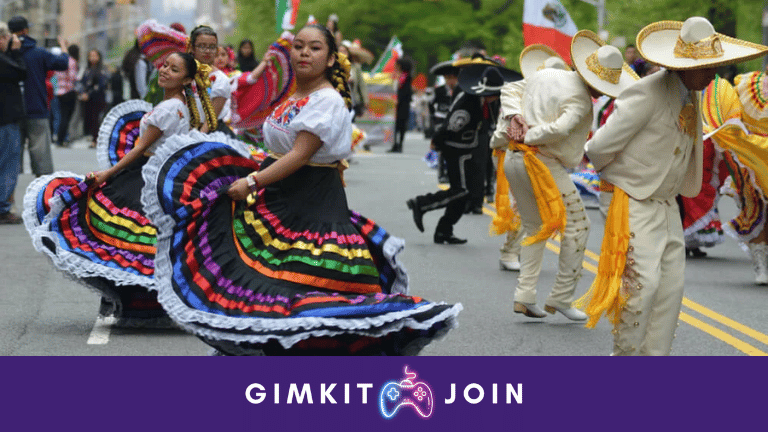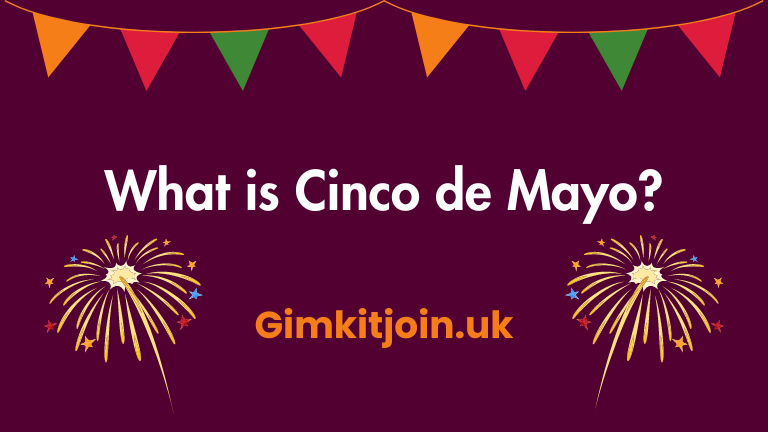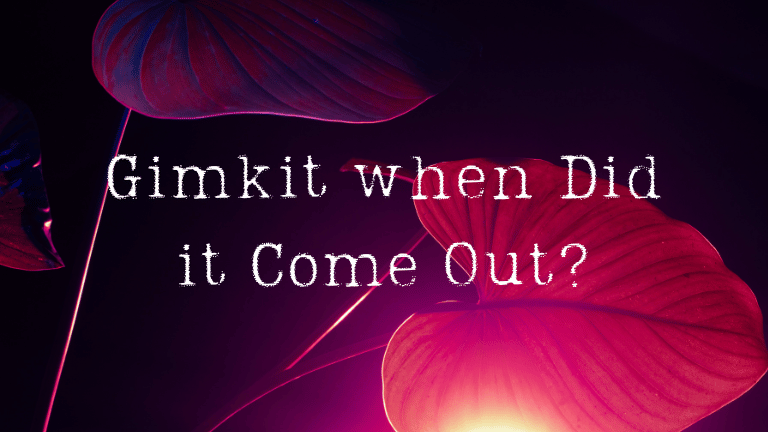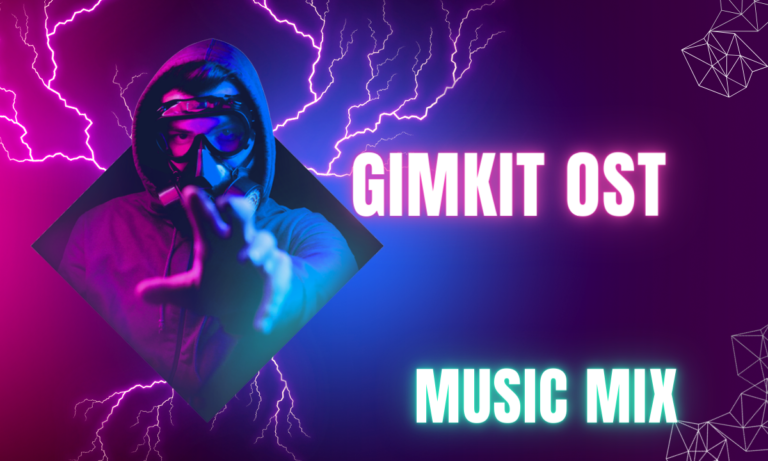What is Cinco de Mayo 2024? Unveiling the History, Traditions, and Significance of This Vibrant Celebration
What is Cinco de Mayo? Cinco de Mayo, a beloved holiday celebrated annually on the 5th of May, has become a cultural phenomenon that transcends borders and resonates with people worldwide. While often misconstrued as a commemoration of Mexican independence, the true essence of Cinco de Mayo lies in its rich historical roots and the enduring spirit of resilience and triumph it embodies. In this comprehensive guide, we’ll delve into the depths of this vibrant celebration, exploring its origins, traditions, and the profound significance it holds for both Mexicans and individuals around the globe.
The Origins of Cinco de Mayo: A Story of Resilience and Victory
To truly understand the essence of Cinco de Mayo, one must journey back in time to the tumultuous era of the 1860s, when Mexico found itself embroiled in a fierce struggle against foreign intervention. It was during this period that a pivotal battle unfolded, forever etching its mark in the annals of Mexican history and shaping the course of events that ultimately led to the celebration we know today.
The French Intervention in Mexico
In the mid-19th century, Mexico found itself in a precarious financial situation, struggling to repay debts owed to various European nations, including France, Britain, and Spain. Seeking to collect on these outstanding debts, the three nations deployed naval forces and occupied the Mexican port of Veracruz in late 1861.
While Britain and Spain eventually negotiated settlements and withdrew their troops, France, under the leadership of Napoleon III, had grander ambitions. Determined to establish a foothold in the Americas and install a monarchy sympathetic to French interests, Napoleon III dispatched a well-equipped French army to invade Mexico in early 1862.
The Battle of Puebla: A Defining Moment
As the French forces advanced inland, they encountered stiff resistance from the Mexican army, led by General Ignacio Zaragoza. On May 5, 1862, the two forces clashed in the small town of Puebla, located just east of Mexico City.
Against all odds, the vastly outnumbered and poorly equipped Mexican troops managed to halt the French offensive, delivering a stunning blow to Napoleon III’s ambitions. The Battle of Puebla, though not a decisive victory in the overall war, served as a powerful symbol of Mexican resilience and the indomitable spirit of the nation in the face of foreign aggression.
The Aftermath and Lasting Impact
While the French eventually captured Mexico City and installed Maximilian I as the ruler of the short-lived Mexican Empire, the Battle of Puebla remained a source of immense pride and inspiration for the Mexican people. It represented a momentary triumph against overwhelming odds and a rallying cry for those who continued to resist the French occupation.
In the years that followed, Cinco de Mayo evolved from a regional commemoration in Puebla to a nationwide celebration, honoring the bravery and determination of the Mexican forces that stood their ground against the French invaders. The holiday became a symbol of Mexican unity, patriotism, and the unwavering spirit of a nation determined to defend its sovereignty and independence.
Cinco de Mayo Traditions: Embracing Culture and Revelry
Cinco de Mayo has grown into a vibrant celebration that transcends its historical roots, encompassing a rich tapestry of cultural traditions, festive gatherings, and joyous revelry. From the colorful parades and lively music to the mouthwatering culinary delights and spirited revelry, this holiday offers a unique opportunity to immerse oneself in the vibrant tapestry of Mexican culture and heritage.
Parades and Festivities
One of the most iconic traditions associated with Cinco de Mayo is the grand parade, a spectacle of color, music, and cultural pride. In cities and towns across Mexico, as well as in Mexican-American communities around the world, streets come alive with elaborate floats, traditional dancers, mariachi bands, and proud displays of Mexican heritage.
These parades often feature reenactments of the Battle of Puebla, with participants donning period costumes and portraying the valiant Mexican soldiers who fought against the French forces. The air is filled with the rhythmic beats of drums, the melodies of mariachi music, and the infectious energy of the crowds lining the streets.
Culinary Delights and Beverages
No Cinco de Mayo celebration would be complete without indulging in the rich and flavorful cuisine that Mexico is renowned for. From the iconic tacos and enchiladas to the mouthwatering tamales and moles, this holiday is a true feast for the senses.
Festive gatherings and street fairs often feature food vendors offering an array of traditional Mexican dishes, each bursting with the vibrant flavors of chili peppers, spices, and fresh ingredients. The aroma of sizzling meats, freshly made tortillas, and savory sauces wafts through the air, whetting the appetite of revelers and inviting them to savor the culinary delights.
Complementing the delectable fare are the refreshing and celebratory beverages that are synonymous with Cinco de Mayo. From the iconic margarita, with its perfect blend of tequila, lime, and salt, to the classic Mexican beers like Corona and Modelo, these libations add an extra layer of festivity to the celebrations.
Music and Dance
The rhythms and melodies that resonate throughout Cinco de Mayo festivities are an integral part of the celebration, capturing the essence of Mexican culture and igniting the spirit of revelry. Traditional mariachi bands, with their iconic charro suits and intricate guitar work, fill the air with the captivating sounds of ranchera and folk music.
Dancers in vibrant, colorful costumes take to the streets and stages, showcasing the rich tapestry of Mexican folk dances. From the lively and energetic jarabe tapatío, also known as the Mexican hat dance, to the graceful and mesmerizing dances inspired by indigenous traditions, each performance is a celebration of Mexico’s diverse cultural heritage.
Community Gatherings and Family Celebrations
At its core, Cinco de Mayo is a celebration that brings communities and families together, fostering a sense of unity, pride, and shared heritage. In Mexico and Mexican-American communities around the world, this holiday serves as an opportunity for gatherings, picnics, and backyard fiestas.
Friends and families come together to enjoy each other’s company, share stories and traditions, and immerse themselves in the festive atmosphere. Children participate in piñata-breaking contests, games, and cultural activities, while adults engage in lively conversations and toast to the spirit of Cinco de Mayo.
These community gatherings and family celebrations not only promote cultural awareness and appreciation but also serve as a means of passing down traditions and values to younger generations, ensuring that the rich heritage of Mexico continues to thrive and be celebrated for years to come.
The Significance of Cinco de Mayo: Beyond Borders and Cultures
While Cinco de Mayo originated as a commemoration of a pivotal moment in Mexican history, its significance and impact have transcended borders and cultures, resonating with people around the world. This vibrant celebration has become a symbol of resilience, unity, and cultural pride, serving as a bridge that connects diverse communities and fosters a deeper understanding and appreciation for the rich tapestry of Mexican heritage.
A Celebration of Resilience and Triumph
At its core, Cinco de Mayo celebrates the indomitable spirit of the Mexican people and their ability to overcome adversity and triumph against overwhelming odds. The Battle of Puebla, though not a decisive victory in the overall war, represented a momentary triumph that inspired hope and ignited the resolve of a nation fighting for its sovereignty.
This spirit of resilience and determination resonates with individuals and communities worldwide, who often face their own challenges and struggles. Cinco de Mayo serves as a reminder that even in the face of daunting obstacles, the human spirit can prevail through courage, unity, and an unwavering commitment to one’s values and principles.
Bridging Cultural Divides and Fostering Unity
Cinco de Mayo has evolved into a powerful force for bridging cultural divides and fostering unity among diverse communities. As the holiday has gained widespread recognition and popularity, it has become a platform for people of all backgrounds to come together, celebrate, and embrace the richness of Mexican culture.
In cities across the United States and beyond, Cinco de Mayo festivities have become inclusive events that transcend ethnic and cultural boundaries. People from all walks of life gather to participate in the revelry, immersing themselves in the vibrant traditions, savoring the delectable cuisine, and appreciating the beauty of Mexican art, music, and dance.
This shared experience not only promotes cultural awareness and appreciation but also fosters a sense of unity and understanding among diverse communities. It serves as a reminder that despite our differences, we can come together in celebration, embracing our unique heritages while also recognizing the common threads that bind us as human beings.
Preserving Cultural Heritage
As the world becomes increasingly globalized and cultures intermingle, the preservation of cultural heritage and traditions has become a paramount concern. Cinco de Mayo serves as a powerful vehicle for safeguarding and celebrating the rich cultural legacy of Mexico, ensuring that its vibrant traditions are passed down from generation to generation.
Through the observance of Cinco de Mayo, Mexican communities both within Mexico and abroad have found a platform to showcase and share their cultural wealth with the world. Traditional dances, music, cuisine, and art forms are not only celebrated but also taught and passed on to younger generations, fostering a deep sense of pride and connection to their roots.
Moreover, Cinco de Mayo celebrations have become a catalyst for cultural education and awareness, providing opportunities for people of all backgrounds to learn about and appreciate the depth and diversity of Mexican culture. By immersing themselves in the festivities, attending exhibitions, and participating in workshops and demonstrations, individuals gain a deeper understanding and respect for the rich tapestry of Mexican heritage.
Economic and Tourism Implications
Beyond its cultural and social significance, Cinco de Mayo has also become a driving force for economic growth and tourism in regions where the celebration holds particular importance. In Mexico, cities and towns that were historically significant in the Battle of Puebla or have deep-rooted Cinco de Mayo traditions have leveraged the holiday as a means to attract visitors and boost local economies.
Municipalities and businesses have capitalized on the influx of tourists by organizing vibrant festivals, cultural events, and culinary experiences that showcase the best of Mexican hospitality and traditions. These events not only generate revenue through ticket sales, food and beverage sales, and tourism-related services but also provide a platform for local artisans, musicians, and entrepreneurs to showcase and sell their wares to a broader audience.
Furthermore, Cinco de Mayo has become a catalyst for the growth of Mexican-inspired businesses and products globally. From restaurants and bars offering authentic Mexican cuisine and beverages to retailers specializing in Mexican crafts and artisanal goods, the demand for Mexican cultural experiences has fueled entrepreneurial opportunities and economic growth.
Embracing Diversity and Inclusion
In recent years, Cinco de Mayo has evolved into a celebration that transcends its Mexican roots and serves as a beacon of diversity and inclusion. As communities around the world have embraced the festivities, they have adapted and infused elements of their own cultural traditions, creating a rich tapestry of diversity and cross-cultural exchange.
In cities with significant Hispanic and Latino populations, Cinco de Mayo celebrations have become a platform for showcasing the cultural richness of various Latin American countries. Parades and festivals feature performances, art, and cuisine that reflect the diverse heritage of countries like Puerto Rico, Cuba, Colombia, and many others, fostering a sense of unity and pride among the broader Latino community.
Moreover, Cinco de Mayo has become an opportunity for individuals from different backgrounds to come together, learn from one another, and celebrate the beauty of cultural diversity. These celebrations often feature educational exhibits, workshops, and interactive activities that promote cross-cultural understanding and appreciation, breaking down barriers and fostering a more inclusive and harmonious society.
Environmental Sustainability and Eco-Friendly Practices
As the world becomes increasingly conscious of the need for environmental sustainability, Cinco de Mayo celebrations have also embraced eco-friendly practices and initiatives. Organizers and participants alike have recognized the importance of minimizing the environmental impact of these large-scale events while still preserving the vibrant spirit of the celebration.
Many Cinco de Mayo festivals and parades have implemented measures to reduce waste and promote recycling, such as providing clearly marked recycling stations, encouraging the use of reusable containers and utensils, and promoting the use of public transportation or carpooling to reduce carbon emissions.
Additionally, some communities have incorporated eco-friendly elements into their celebrations, such as using recycled materials in float and costume construction or featuring educational exhibits and workshops on sustainable living practices. These efforts not only contribute to a healthier planet but also serve as a powerful reminder that cultural celebrations can coexist harmoniously with environmental responsibility.
Spreading Joy and Positivity
At the heart of Cinco de Mayo lies a spirit of joy, positivity, and celebration that transcends cultural boundaries. The vibrant colors, infectious music, and lively atmosphere of these festivities have the power to uplift spirits, bring people together, and create lasting memories.
For many individuals, participating in Cinco de Mayo celebrations offers a respite from the stresses and challenges of daily life. The joyous atmosphere and festive revelry provide an opportunity to let loose, embrace the moment, and immerse oneself in the infectious energy that surrounds these events.
Moreover, the spirit of Cinco de Mayo serves as a reminder of the resilience and perseverance of the human spirit. Just as the Mexican people triumphed against overwhelming odds in the Battle of Puebla, the celebration encourages individuals to embrace a positive mindset and find strength in the face of adversity.
Whether through the shared experience of savoring delectable cuisine, dancing to the rhythms of mariachi music, or simply basking in the vibrant colors and lively atmosphere, Cinco de Mayo has the power to spread joy, positivity, and a sense of unity that transcends cultural and linguistic boundaries.
Embracing Cinco de Mayo: A Celebration for All
As we have explored, Cinco de Mayo is a multifaceted celebration that holds profound significance for both Mexicans and individuals around the world. Its rich history, vibrant traditions, and enduring spirit of resilience and triumph have made it a beloved and inclusive event that brings people together in a shared experience of joy, cultural appreciation, and unity.
Whether you are of Mexican descent or simply someone who appreciates the beauty of cultural diversity, Cinco de Mayo offers an opportunity to immerse yourself in the vibrant tapestry of Mexican heritage. Attend a local parade or festival, savor the mouthwatering flavors of traditional cuisine, or simply gather with friends and family to celebrate the indomitable spirit that this holiday represents.
Embrace the spirit of Cinco de Mayo, and let it serve as a reminder that despite our differences, we can come together in celebration, fostering understanding, appreciation, and a shared sense of humanity that transcends borders and cultures.

FAQs
What is the history behind Cinco de Mayo?
Cinco de Mayo commemorates the Mexican army’s victory over the French Empire at the Battle of Puebla on May 5, 1862. Despite being outnumbered and poorly equipped, the Mexican forces managed to defeat the French army, a significant moment in Mexican history.
How is Cinco de Mayo celebrated?
Cinco de Mayo is celebrated with parades, parties, mariachi music, traditional Mexican foods, and dancing. In Mexico, the day is primarily observed in Puebla with military parades and reenactments of the battle. In the United States, it has evolved into a celebration of Mexican culture and heritage.
Is Cinco de Mayo a major holiday in Mexico?
While Cinco de Mayo is a recognized holiday in Mexico, it is not a federal holiday, and celebrations are not as widespread as in the United States. In Mexico, the day is primarily celebrated in Puebla, where the battle took place.
What is the significance of Cinco de Mayo in Mexican culture?
Cinco de Mayo is a symbol of Mexican resilience and patriotism. The victory at the Battle of Puebla is seen as a moment when Mexico successfully defended its sovereignty against a powerful foreign invader, inspiring a sense of national pride.
How is Cinco de Mayo different from Mexican Independence Day?
Cinco de Mayo is often confused with Mexican Independence Day, which is celebrated on September 16th. Mexican Independence Day commemorates the start of Mexico’s war of independence from Spain, which began in 1810 and culminated in 1821 with Mexico’s independence.



![Gimkit Hacks for Auto Answer [2024]](https://gimkitjoin.uk/wp-content/uploads/2024/02/Gimkit-Hacks-for-Auto-Answer.png)



